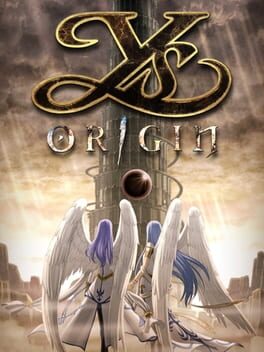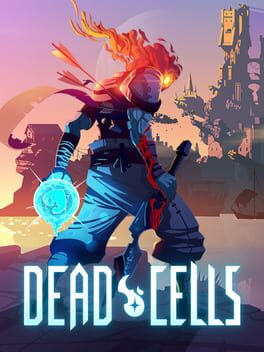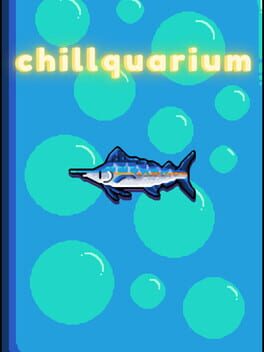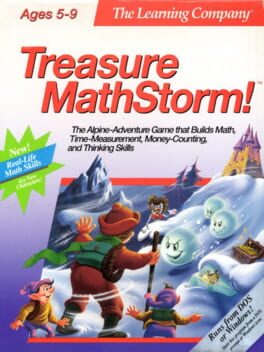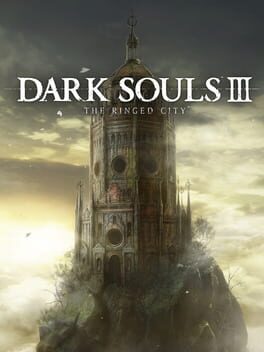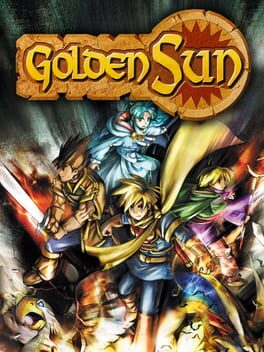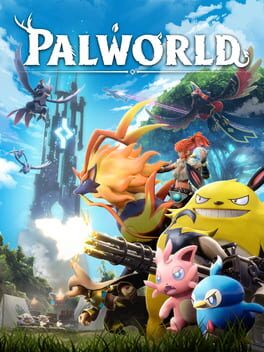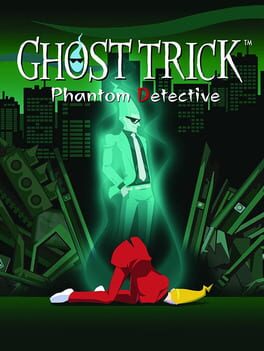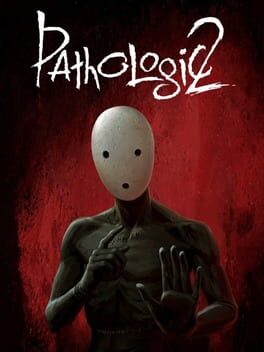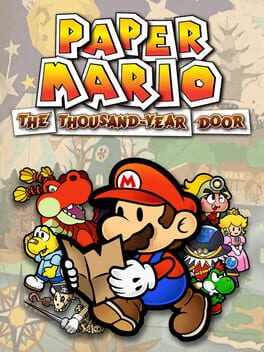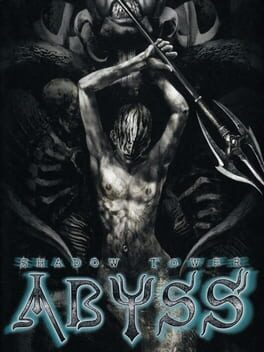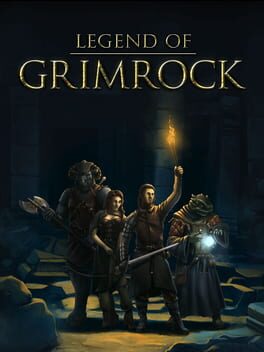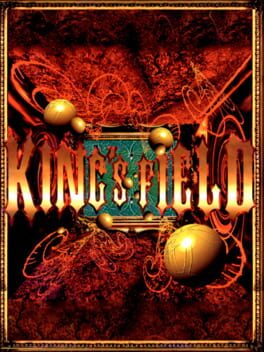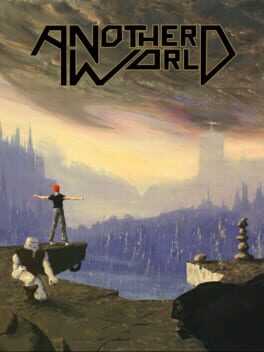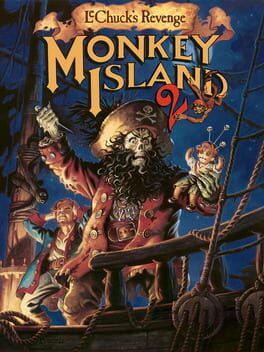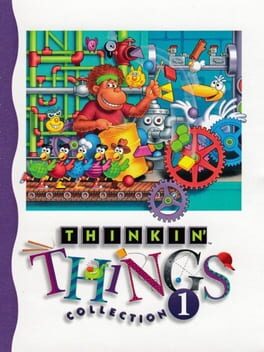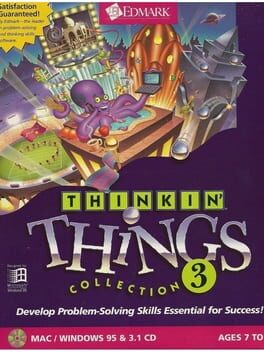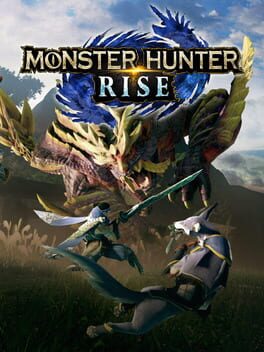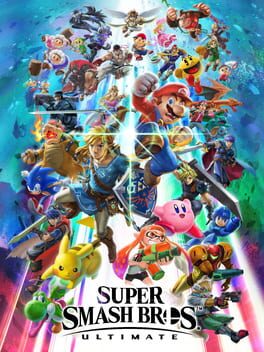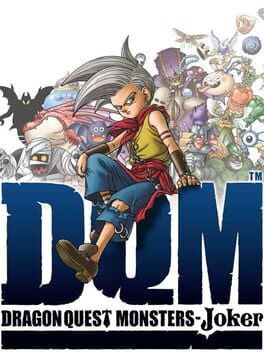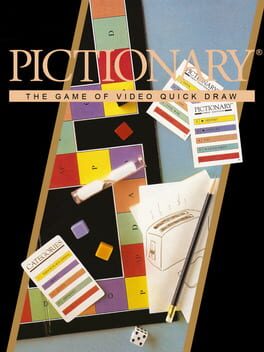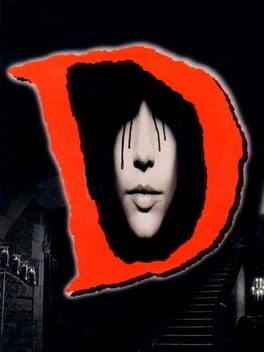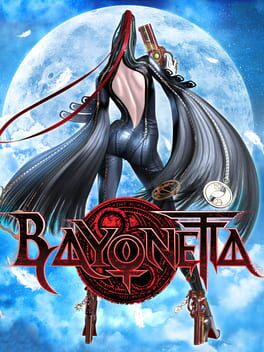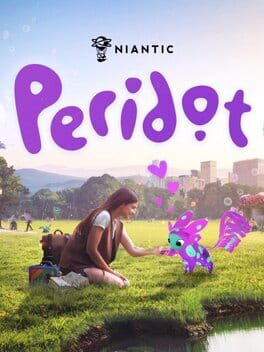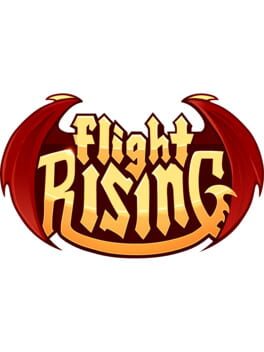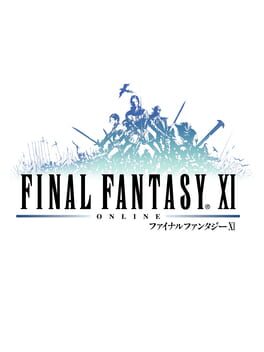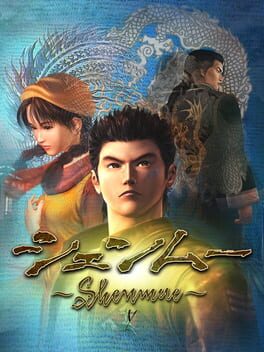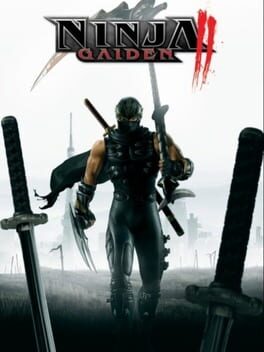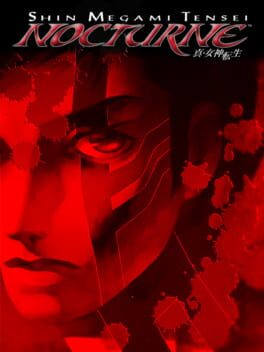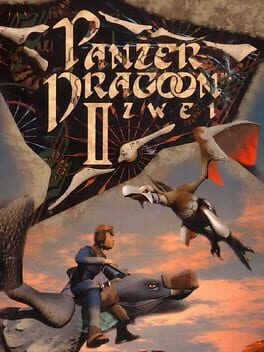Spacelung
43 reviews liked by Spacelung
Ys Origin
2006
Almost done with my Hard Toal run! First, the things I think are good
- The romance and setting. Oh babey
- At certain brief points the combat feels really good
BUT...
For the past few years I've espoused these three Ys games (with the order being Oath > 6 > Origin) but coming back to Origin I see a number of problems.
First, the gameplay's whole point of existing is speed and aggression. It feels absolutely the best when you're doing these things and being rewarded for it. For this reason, Hugo's Hard playthrough kind of sucks: he's slow, aiming is fiddly and you're doing so much thinking about your exact positioning as a result.
BOSSES
The boss movesets are often contradictory with the whole 'pulpy dark high fantasy power metal' aesthetic and "fast and aggression feel good!" idea : a gigantic number (perhaps all?) of the bosses are designed around only having particular safe windows to attack. These range from the most obnoxious (Gelaldy, the fire construct, who you must wait for his hands to pound the ground): these feel almost like Zelda/Mario bosses: you're expected to behave a very particular, strict way, waiting for the moment to bop the enemy.
Some bosses employ this logic but allow you to speed up opening these windows: Khonsclard (sand plant) or Velagunder (poison bubble arm beast), etc. However, because the act of attacking them when vulnerable is so boring (they just sit there waiting to get hit) there's a terrible, clunky rhythm to the fights. Some bosses do the same thing but 'hide' this fact - Shion lets you be aggressive to stop his shield but you'll still have to dodge his easy attacks before making him vulnerable again.
The fights that feel best are the one-on-ones - Epona, Galleon, Hugo, Kishgal - but on harder difficulties, their damage output is so punishing that your only option is to learn their moves perfectly. Doing so isn't much of a task, but it turns the battles into basically a Zelda fight of sorts, where your moves are the items - dodge, do 3 hits, dodge, do 3 hits... repeat until dead.
The problem then, is that the difficulty in this game mainly stems from weird hitboxes, dense bullet and attack patterns that are difficult to dodge because of the top-down camera, and poor visual communication. One boss's attacks are dust clouds on top of moving sand! Your position on the screen can be a bit hard to see because of how small you are.
This is still mostly manageable, but it does push you to use the iframe-granting moves which feels messy. Bosses like Nygtilger are particularly bad on this front: the boss is extremely simple, except that you have to stand on it while it continues to snake around and shoot bombs that get hidden under its body.
If the game wants to be about speed and aggression, then the bosses ought to be tuned to reward that. But due to fundamental issues described, playing at high speeds becomes tricky because the game rarely feels like it's up to snuff on the precision of your movement. So the key to success on harder difficulties feels more like holding back and playing slowly, because moving too fast will lead to you getting hit by a nearly-invisible dust cloud, or you being unable to jump due to the 0.25 second delay after an attack (yes really!)
There's nothing wrong with a jump-delay after an attack, but again the enemies/bosses have to be tuned to account for that... otherwise you just end up playing conservatively, because many times bullets or attacks will whip out at ridiculous speeds during that delay window.
LEVEL DESIGN
What I find the most disturbing about Ys Origin coming back to it, is how they twisted shmup's combo systems into this compulsive, flashy and ultimately shallow system of powering up as you do more hits quickly, to gain EXP faster. I think they 'perfected' this system with Origin (compared to 6 and Oath), it makes the regular levels feel like slot machines.
Here's the problem with the level design: again, think about speed and aggression. The levels are disastrously designed: pressing buttons leads to 10 second camera pans, gigantic hitboxes on spike pillars make you move slow and ploddingly, there's generally a ton of Zelda Design all over the place: use the obvious item on an obvious wall, press a button, run over here, etc. There's almost nothing resembling a true puzzle, it's all there as filler.
The enemy design doesn't really work: let's be generous and pretend that I'm not going to grind out levels so I can just blindly mash my way through anything (which the game strongly encourages and pushes you towards).
Due to the gigantic hitboxes and speed of enemy attacks, and the way that enemies rarely combine in a synergistic way - you're encouraged to slowly take your time and pick things off. When designing enemy encounters for a game that's meant to be fast-paced with movement, it's better to have enemies with slower (not necessarily slow) attacks, few to no invulnerable states, and that attack at various ranges. By balancing the combinations of enemies, you can create combat encounters that each subtly feel different. The fast pace is maintained, but without making it incoherent if you choose to play aggressively.
The difficulty, then, comes from trying to avoid the slow accumulation of mistakes. Trying to play fast is impossible in Ys Origin - you'll just group all the enemies together and get stunlocked by something, unless you have enough DPS to overpower them. Your attacks' weird forward motion/tracking will just drag you into some bullet flying at 10,000 MPH.
I'm of the opinion that adding more numbers to Action games doesn't fix anything, it just serves to hide inherent problems. If there were no numbers in Ys Origin's combat or healing items, it would clearly feel kind at odds with itself. You'd be playing at a weirdly slow pace so as to not get hit by the weird overlap of enemy behaviors, you'd be circle strafing and bopping stuff slowly. But with numbers, this is hidden because by the time you're about to complain about anything, you've leveled up 3 times and now everything dies in like 3 hits and so much health items are dropping you can ignore the entire design.
IN CONCLUSION
This game feels very symbolic: only released 3 years before Demon's Souls, it sits at the point right before 3D action games basically started to completely lose their connection to physical reality, shifting from a focus on spacing and movement, and, well, Action, towards the realm of reading animations to perform dodge rolls and parries, waiting for meters to cool down to perform your Magical Gacha Slam!
Ys Origin has at its core something that kind of makes sense, but the entire design of the game misunderstands it. Entire boss battles break if you miss weapon upgrades, stage hazards take out 30% of your health if you overlooked an armor box.
Padding out things with incessant numbers and resistance multipliers, a game designed by math formulas, curves, nerds and spreadsheets, rather than thinking about what it feels like to touch literally anything and how that might be pleasurable if transmitted to a player.
IN CONCLUSION IN CONCLUSION
It's called ACTION for a reason! Designers take note: You don't DODGE ROLL out of the way of a FUCKING CAR, you MOVE OUT OF THE WAY. Jesus Christ!
4/5 because of epona and hugo and setting a game in the final dungeon of ys 1 is sick
- The romance and setting. Oh babey
- At certain brief points the combat feels really good
BUT...
For the past few years I've espoused these three Ys games (with the order being Oath > 6 > Origin) but coming back to Origin I see a number of problems.
First, the gameplay's whole point of existing is speed and aggression. It feels absolutely the best when you're doing these things and being rewarded for it. For this reason, Hugo's Hard playthrough kind of sucks: he's slow, aiming is fiddly and you're doing so much thinking about your exact positioning as a result.
BOSSES
The boss movesets are often contradictory with the whole 'pulpy dark high fantasy power metal' aesthetic and "fast and aggression feel good!" idea : a gigantic number (perhaps all?) of the bosses are designed around only having particular safe windows to attack. These range from the most obnoxious (Gelaldy, the fire construct, who you must wait for his hands to pound the ground): these feel almost like Zelda/Mario bosses: you're expected to behave a very particular, strict way, waiting for the moment to bop the enemy.
Some bosses employ this logic but allow you to speed up opening these windows: Khonsclard (sand plant) or Velagunder (poison bubble arm beast), etc. However, because the act of attacking them when vulnerable is so boring (they just sit there waiting to get hit) there's a terrible, clunky rhythm to the fights. Some bosses do the same thing but 'hide' this fact - Shion lets you be aggressive to stop his shield but you'll still have to dodge his easy attacks before making him vulnerable again.
The fights that feel best are the one-on-ones - Epona, Galleon, Hugo, Kishgal - but on harder difficulties, their damage output is so punishing that your only option is to learn their moves perfectly. Doing so isn't much of a task, but it turns the battles into basically a Zelda fight of sorts, where your moves are the items - dodge, do 3 hits, dodge, do 3 hits... repeat until dead.
The problem then, is that the difficulty in this game mainly stems from weird hitboxes, dense bullet and attack patterns that are difficult to dodge because of the top-down camera, and poor visual communication. One boss's attacks are dust clouds on top of moving sand! Your position on the screen can be a bit hard to see because of how small you are.
This is still mostly manageable, but it does push you to use the iframe-granting moves which feels messy. Bosses like Nygtilger are particularly bad on this front: the boss is extremely simple, except that you have to stand on it while it continues to snake around and shoot bombs that get hidden under its body.
If the game wants to be about speed and aggression, then the bosses ought to be tuned to reward that. But due to fundamental issues described, playing at high speeds becomes tricky because the game rarely feels like it's up to snuff on the precision of your movement. So the key to success on harder difficulties feels more like holding back and playing slowly, because moving too fast will lead to you getting hit by a nearly-invisible dust cloud, or you being unable to jump due to the 0.25 second delay after an attack (yes really!)
There's nothing wrong with a jump-delay after an attack, but again the enemies/bosses have to be tuned to account for that... otherwise you just end up playing conservatively, because many times bullets or attacks will whip out at ridiculous speeds during that delay window.
LEVEL DESIGN
What I find the most disturbing about Ys Origin coming back to it, is how they twisted shmup's combo systems into this compulsive, flashy and ultimately shallow system of powering up as you do more hits quickly, to gain EXP faster. I think they 'perfected' this system with Origin (compared to 6 and Oath), it makes the regular levels feel like slot machines.
Here's the problem with the level design: again, think about speed and aggression. The levels are disastrously designed: pressing buttons leads to 10 second camera pans, gigantic hitboxes on spike pillars make you move slow and ploddingly, there's generally a ton of Zelda Design all over the place: use the obvious item on an obvious wall, press a button, run over here, etc. There's almost nothing resembling a true puzzle, it's all there as filler.
The enemy design doesn't really work: let's be generous and pretend that I'm not going to grind out levels so I can just blindly mash my way through anything (which the game strongly encourages and pushes you towards).
Due to the gigantic hitboxes and speed of enemy attacks, and the way that enemies rarely combine in a synergistic way - you're encouraged to slowly take your time and pick things off. When designing enemy encounters for a game that's meant to be fast-paced with movement, it's better to have enemies with slower (not necessarily slow) attacks, few to no invulnerable states, and that attack at various ranges. By balancing the combinations of enemies, you can create combat encounters that each subtly feel different. The fast pace is maintained, but without making it incoherent if you choose to play aggressively.
The difficulty, then, comes from trying to avoid the slow accumulation of mistakes. Trying to play fast is impossible in Ys Origin - you'll just group all the enemies together and get stunlocked by something, unless you have enough DPS to overpower them. Your attacks' weird forward motion/tracking will just drag you into some bullet flying at 10,000 MPH.
I'm of the opinion that adding more numbers to Action games doesn't fix anything, it just serves to hide inherent problems. If there were no numbers in Ys Origin's combat or healing items, it would clearly feel kind at odds with itself. You'd be playing at a weirdly slow pace so as to not get hit by the weird overlap of enemy behaviors, you'd be circle strafing and bopping stuff slowly. But with numbers, this is hidden because by the time you're about to complain about anything, you've leveled up 3 times and now everything dies in like 3 hits and so much health items are dropping you can ignore the entire design.
IN CONCLUSION
This game feels very symbolic: only released 3 years before Demon's Souls, it sits at the point right before 3D action games basically started to completely lose their connection to physical reality, shifting from a focus on spacing and movement, and, well, Action, towards the realm of reading animations to perform dodge rolls and parries, waiting for meters to cool down to perform your Magical Gacha Slam!
Ys Origin has at its core something that kind of makes sense, but the entire design of the game misunderstands it. Entire boss battles break if you miss weapon upgrades, stage hazards take out 30% of your health if you overlooked an armor box.
Padding out things with incessant numbers and resistance multipliers, a game designed by math formulas, curves, nerds and spreadsheets, rather than thinking about what it feels like to touch literally anything and how that might be pleasurable if transmitted to a player.
IN CONCLUSION IN CONCLUSION
It's called ACTION for a reason! Designers take note: You don't DODGE ROLL out of the way of a FUCKING CAR, you MOVE OUT OF THE WAY. Jesus Christ!
4/5 because of epona and hugo and setting a game in the final dungeon of ys 1 is sick
I didn't like Sonic Mania. This isn't anyone's fault. Tee Lopes absolutely annihilates with an impeccable collection of synth funk bangers. Whitehead and Co's reinterpretation and expansion of the classic Sonic aesthetic and structure is sublime. The bells and whistles of its revivalism are a glorious siren song that, for years, distracted me from the very simple truth that I don't actually like classic Sonic! At all!
As platformers always are for me, it's down to the level design. In my mind, 2D Sonic is very mechanical. What they lack is not so much player agency but player input entirely. I recognise that the level design is quite open on paper. There are secrets, shortcuts, and all the regular shebang, but I can't tell because the games are so visually stuffed. It often feels like I'm smashing the right side wall down until I knock my head on another slideshow button. The game will then briefly play itself for me (this is the fun bit) as Sonic moves at maximum speed until I slam into a concrete wall and die. Then, I have to restart from the previous level because we still haven't recognised the futility of a lives system in platformers after a half-century of their existence. Did I mention I'm really bad at 2D Sonic games? That doesn't help.
The problem is, fundamentally, Sonic (and, by extension, the player) is a non-factor. I don't feel like I'm doing any of the cool stuff as much as the cool stuff is happening to me. The levels are a series of exceptionally overdesigned locks that the spin-dash key opens. Many people find this fun, but to me, it's nothingburger gameplay in service of crackerjack aesthetic design. I do not enjoy being a small-scrunched-up ball of paper tossed around a wind tunnel.
You can take the man out of the Sonic, but you can't take the Sonic out of the man. Penny's Big Breakaway wins and loses all the same battles as Sonic Mania, with one major change. Penny herself has a dazzling moveset, probably the most varied in any of this decade's 3D platformers, and it is a joy to unravel. But that one change is all the change in the world. They also added a third dimension. I am a sucker for the z-axis.
Do not show up for the story. Or restrained visual palettes. Or compelling collectables. Or functional hitboxes and boss fights. Or even really the level design itself, which is far more Sonic Adventure than I'd consider ideal. Show up for the swing into dash into roll bread-and-butter combo that feels like a million bucks. Show up for dropping off a cliff and swinging with such immense momentum at the bottom that you shoot yourself up even higher than you started. Show up for DIY movement tech so impactful that you end up dying by knocking into the other side of invisible walls. Show up for spending an entire level platforming out of bounds because why the fuck not?
This could never be a personal favourite. And that's not even because it's a total mess! I am Mr Mario Galaxy 2. Level design trumps all, and I can confidently say that Whitehead and I are out of sync w/r/t what good platforming level design is. But movement accounts for a hell of a lot. I don't just get to do cool stuff. I have a monopoly on cool stuff. You're doing something right if I'm mentally filing you away on the Super Mario Sunshine shelf.
The speedrun for this is going to whip so insanely hard.
As platformers always are for me, it's down to the level design. In my mind, 2D Sonic is very mechanical. What they lack is not so much player agency but player input entirely. I recognise that the level design is quite open on paper. There are secrets, shortcuts, and all the regular shebang, but I can't tell because the games are so visually stuffed. It often feels like I'm smashing the right side wall down until I knock my head on another slideshow button. The game will then briefly play itself for me (this is the fun bit) as Sonic moves at maximum speed until I slam into a concrete wall and die. Then, I have to restart from the previous level because we still haven't recognised the futility of a lives system in platformers after a half-century of their existence. Did I mention I'm really bad at 2D Sonic games? That doesn't help.
The problem is, fundamentally, Sonic (and, by extension, the player) is a non-factor. I don't feel like I'm doing any of the cool stuff as much as the cool stuff is happening to me. The levels are a series of exceptionally overdesigned locks that the spin-dash key opens. Many people find this fun, but to me, it's nothingburger gameplay in service of crackerjack aesthetic design. I do not enjoy being a small-scrunched-up ball of paper tossed around a wind tunnel.
You can take the man out of the Sonic, but you can't take the Sonic out of the man. Penny's Big Breakaway wins and loses all the same battles as Sonic Mania, with one major change. Penny herself has a dazzling moveset, probably the most varied in any of this decade's 3D platformers, and it is a joy to unravel. But that one change is all the change in the world. They also added a third dimension. I am a sucker for the z-axis.
Do not show up for the story. Or restrained visual palettes. Or compelling collectables. Or functional hitboxes and boss fights. Or even really the level design itself, which is far more Sonic Adventure than I'd consider ideal. Show up for the swing into dash into roll bread-and-butter combo that feels like a million bucks. Show up for dropping off a cliff and swinging with such immense momentum at the bottom that you shoot yourself up even higher than you started. Show up for DIY movement tech so impactful that you end up dying by knocking into the other side of invisible walls. Show up for spending an entire level platforming out of bounds because why the fuck not?
This could never be a personal favourite. And that's not even because it's a total mess! I am Mr Mario Galaxy 2. Level design trumps all, and I can confidently say that Whitehead and I are out of sync w/r/t what good platforming level design is. But movement accounts for a hell of a lot. I don't just get to do cool stuff. I have a monopoly on cool stuff. You're doing something right if I'm mentally filing you away on the Super Mario Sunshine shelf.
The speedrun for this is going to whip so insanely hard.
Dead Cells
2018
I don't say what I say to make enemies. But I don't know what people see in this. I don't even know what there is to see. Dead Cells is one of the most off-putting things I've ever experienced. I would only normally review a roguelike after completing at least one run, but I cannot, in good faith, siphon more of my immortal soul into this grotesque husk.
Dead Cells is, at least at this advanced stage in its spread, a purge liquid of level un-design, obnoxious key-jangling meta-progression, and Weekend-at-Bernie's-ed references to better, richer experiences. Let's take those one at a time.
I get part of a roguelike is the inherent randomisation of a procedurally generated run-by-run experience. Still, I cannot get over how not designed anything in this is. This spits in the face of a curated experience. Yet, its variance is profoundly unexciting. The level design is both indifferently composed and micromanaged. This seems like a paradox, but it comes from approaching your random and set elements with equal disinterest and incompetence. Each area has a series of stock buildings and pits and tiny gimmicks attempting to give it something, anything, to stand out as its own thing. This time, you jump on plants instead of climbing chains (though they're blatantly replaced one-to-one by the almighty level designing algorithm), and the completely brainless punching bags are mushrooms instead of goop people. Sure. That's something. Let's use the Fractured Shrines as our case study, which I'd credit as about as close to interesting or unique as any area of the game gets (and is also apparently fucking DLC, so take that for what it is). It's an obstacle course through the clouds, with birds, saws, and hidden floor traps constructing bridges between these larger structures throughout the map. Most of these are opportunities for equipment boosts (shops and such), one of which is the exit to the next area. Sounds great! But the traps and enemies are the same every time. They will be placed in slightly varying orders, but you will interact with them all in the same way. Every gap is effortlessly cleared, every trap placed and dodged in the same manner, and every enemy handled the same way. The experience within the area feels redundant upon revisit. It's the same buildings that you'll navigate through in the same way. We have a theoretically random area that feels functionally the same every time. There is nothing to learn, nothing to master. Its cards are all on the table before you even sit down. And Yet. What is effectively randomised is done so thoughtlessly. The worst offender is the randomised exit position. Sometimes, your visit lasts two seconds. Sometimes, you're stuck forever. The way the random elements are integrated is completely indifferent to game flow or pacing, making every run feel slapdash in construction. It is completely uncurated but without compelling variety. They have somehow dodged both the joy of a set experience and the thrill of a varying one. It is a worst of both worlds that doesn't even seem possible.
And I'm not even done complaining about this part yet. 99.9% of this game is spent running through non-descript tunnels against non-descript enemies who pose no threat. No effort has been put into encounters—both in design (visual or mechanical) or positioning. Boss fights (one of the few set things in the game) exemplify this by being universally rubbish. I know it's not fair (though the game explicitly begs the comparison), but look at how much more dynamic and legible Hollow Knight's bosses are. Then look at the fucking Hand of the King. That dude is just fucking standing there! Your roll + jump moveset feels energising for the first hour (the on-kill speed-up is one of the few things stopping this from an actual 0 out of 10) but is legendarily superficial. I'd love to get a breakdown of the I-frames on that roll because it registers as nonsense to me. Either way, your moveset is completely ill-fitting to the (*ahem*) ""souls-lite"" (I'll get to it) boss fights. I assume they're referring to their attacks doing half a health bar every hit because I cannot figure out what else they could mean. The touch-of-death attack-pattern learning experience is like pulling teeth when you get one try every 2 hours. This is why profoundly similar experiences like Hades make the runs more explicitly structured and the bosses more generous. And dying is not the issue! Dying without learning anything is! If the interstitial segments are without intrigue and the bosses are so volatile, the entire game becomes one bad Dark Souls runback. Which it is.
The only exception to this is The Bank, the game's one novel set-piece, with a fantastic parkour segment to boot. Unfortunately, I got to the end of this segment without having yet unlocked wall jump, so I was gated from being able to progress in this run. Completely. I just crashed into a cement column. Why would you allow this to occur? Because you've put no thought into encounter structure or (and) how the various areas cohere together as a whole. So, I guess we have no exciting sections. Embarrassing.
I chatted briefly in my Dicey Dungeons review about my general disdain for meta-progression in roguelikes, and this is probably the most horrid example ever. What I just said is that I oppose the roguelite sub-genre on principle. If you think I will qualify that, you're dead wrong. This entire type of game misses the fun part of being a roguelike. Outside of a 'card game, but you (quickly) unlock new cards through playing' sense of meta progression, I want none of it. All I want to unlock by playing one of these games is the knowledge of how to do better with what's available to me. But this is where all the thought has gone in. What you get is a mass of little blue orbs that unlock new weapons (all of which feel identical to use), perks, abilities, cosmetics, healing, shops, and re-rolls. There is no game at the beginning! There is nothing fun about panning all day for virtual gold in the hope I'll become strong enough to beat the final boss guy to death with the pan. Not only do you have no chance to begin with (without healing, weapons of actual utility or the many, many upgrades you acquire to empower your builds), but you just can't access a ton of areas from the start. Yes, it's, of course, technically possible to win on an initial run, but get a fucking grip. By the time you've sunk 2000 of your dark souls into bonus abilities, you're playing a different game. To reiterate this point, I want to touch back on another element of meta-progression that I find completely indefensible: the permanent runes. Lets look back on the fucking wall jump Bank fiasco. If you can seriously look me in the eyes and tell me it's fine that a roguelike has offered me a genuinely unwinnable situation, not from a failure in build or planning or performance on my part, or even just bad dumb luck (this is a fault with the genre I'm willing to forgive!) but because I have not yet done enough runs for the game to dane me 'allowed to progress,' then I don't get you. What do you even like about these games?
Then there are the parts where this game turns into fucking Free Guy for PC indie games. It's not cute. It's not even that it's ruinous to the genuinely successful and overbearing aesthetic design (the literal only nice thing I have to offer this game is that it looks good, and not just in a 'wow so many pixels' way, but it has a unique and enjoyable look with a nice colour palette). Though to be so clear as to be rendered imperceptible, it is ruinous, as are the funny little notes and dialogue boxes and rooms referring to these games. How many times do I have to run into rooms that are just empty? Just epic reference rooms for the epic fans? Why would I want these? Putting that aside, the real problem is how genuinely embarrassing it is to put yourself in conversation with these games. You get the Hollow Knight nail, and you bounce around on top of enemies (much like in the hit video game 'Hollow Knight'); it's awkward and clumsy and reminds me of how profoundly tactile, innervating and precise the movement and combat of Hollow Knight is. The Hotline Miami and Half-life melee weapons are there, ready to instantly fire off your neural pathways to connect the fact that, yeah, other games do have personality and humour to their writing without coming across as desperate to impress. Gotta get that Katana Zero skin because after rolling around like an idiot for 10 hours through nothing corridors, I definitely want to be reminded of that game's exceptionally animated pace of gameplay and palpable momentum in motion. How could I forget the Starfury from Terraria, ready to remind you of a game that completely upstages even the nerdy epic references to other games! Terraria integrates that stuff so naturally that it barely registers it's what's happening. It's all within the world. Here every crossover weapon is imported off of fucking Etsy.
And that's it—no clean conclusion to this. I loathed everything about this game. The only thing Dead Cells ever did for me was let me briefly talk to the guy at EB games that I have a crush on, but even that's a double-edged sword. How can I, in good conscience, try to scam my way to getting a refund now? Way to go, Evil Empire. I hope you use my money wisely when you literally remake this game beat for beat with a Prince of Persia skin.
The review is over now. But I need to talk about genre terminology again. I can't help myself!
I just have to draw attention to the synopsis on this page. 'Souls-lite combat'? SOULS-LITE?? Soulslike is already a completely dysfunctional term that was invented only to make a specific series of action RPGs their own genre for no reason. It has ballooned into a non-word to describe every hard game with over-the-shoulder melee combat, bosses, and, I don't know. Checkpoints? I watched a YouTube video essay where someone tried to convince me Hollow Knight is a soulslike. This word means nothing! So what the fuck is souls-lite combat? I've played this game. Is it that you have a checkpoint rechargeable healing item? And that enemies do a lot of damage? And you can roll? Just like Dark Souls, where you do that stuff? Should I extrapolate from there? Lego Star Wars lets you roll, heal, fight melee-boss fight encounters that kill you in less than a handful of swings, and it forces onto you janky platforming segments that throw you into instant death pits. Clearly, then, it is a souls-lite! Hell, give the levels fewer checkpoints, and it might as well have been made by FromSoftware themselves! I can't take it anymore, man. These fake marketing genres give me fucking hives.
Dead Cells is, at least at this advanced stage in its spread, a purge liquid of level un-design, obnoxious key-jangling meta-progression, and Weekend-at-Bernie's-ed references to better, richer experiences. Let's take those one at a time.
I get part of a roguelike is the inherent randomisation of a procedurally generated run-by-run experience. Still, I cannot get over how not designed anything in this is. This spits in the face of a curated experience. Yet, its variance is profoundly unexciting. The level design is both indifferently composed and micromanaged. This seems like a paradox, but it comes from approaching your random and set elements with equal disinterest and incompetence. Each area has a series of stock buildings and pits and tiny gimmicks attempting to give it something, anything, to stand out as its own thing. This time, you jump on plants instead of climbing chains (though they're blatantly replaced one-to-one by the almighty level designing algorithm), and the completely brainless punching bags are mushrooms instead of goop people. Sure. That's something. Let's use the Fractured Shrines as our case study, which I'd credit as about as close to interesting or unique as any area of the game gets (and is also apparently fucking DLC, so take that for what it is). It's an obstacle course through the clouds, with birds, saws, and hidden floor traps constructing bridges between these larger structures throughout the map. Most of these are opportunities for equipment boosts (shops and such), one of which is the exit to the next area. Sounds great! But the traps and enemies are the same every time. They will be placed in slightly varying orders, but you will interact with them all in the same way. Every gap is effortlessly cleared, every trap placed and dodged in the same manner, and every enemy handled the same way. The experience within the area feels redundant upon revisit. It's the same buildings that you'll navigate through in the same way. We have a theoretically random area that feels functionally the same every time. There is nothing to learn, nothing to master. Its cards are all on the table before you even sit down. And Yet. What is effectively randomised is done so thoughtlessly. The worst offender is the randomised exit position. Sometimes, your visit lasts two seconds. Sometimes, you're stuck forever. The way the random elements are integrated is completely indifferent to game flow or pacing, making every run feel slapdash in construction. It is completely uncurated but without compelling variety. They have somehow dodged both the joy of a set experience and the thrill of a varying one. It is a worst of both worlds that doesn't even seem possible.
And I'm not even done complaining about this part yet. 99.9% of this game is spent running through non-descript tunnels against non-descript enemies who pose no threat. No effort has been put into encounters—both in design (visual or mechanical) or positioning. Boss fights (one of the few set things in the game) exemplify this by being universally rubbish. I know it's not fair (though the game explicitly begs the comparison), but look at how much more dynamic and legible Hollow Knight's bosses are. Then look at the fucking Hand of the King. That dude is just fucking standing there! Your roll + jump moveset feels energising for the first hour (the on-kill speed-up is one of the few things stopping this from an actual 0 out of 10) but is legendarily superficial. I'd love to get a breakdown of the I-frames on that roll because it registers as nonsense to me. Either way, your moveset is completely ill-fitting to the (*ahem*) ""souls-lite"" (I'll get to it) boss fights. I assume they're referring to their attacks doing half a health bar every hit because I cannot figure out what else they could mean. The touch-of-death attack-pattern learning experience is like pulling teeth when you get one try every 2 hours. This is why profoundly similar experiences like Hades make the runs more explicitly structured and the bosses more generous. And dying is not the issue! Dying without learning anything is! If the interstitial segments are without intrigue and the bosses are so volatile, the entire game becomes one bad Dark Souls runback. Which it is.
The only exception to this is The Bank, the game's one novel set-piece, with a fantastic parkour segment to boot. Unfortunately, I got to the end of this segment without having yet unlocked wall jump, so I was gated from being able to progress in this run. Completely. I just crashed into a cement column. Why would you allow this to occur? Because you've put no thought into encounter structure or (and) how the various areas cohere together as a whole. So, I guess we have no exciting sections. Embarrassing.
I chatted briefly in my Dicey Dungeons review about my general disdain for meta-progression in roguelikes, and this is probably the most horrid example ever. What I just said is that I oppose the roguelite sub-genre on principle. If you think I will qualify that, you're dead wrong. This entire type of game misses the fun part of being a roguelike. Outside of a 'card game, but you (quickly) unlock new cards through playing' sense of meta progression, I want none of it. All I want to unlock by playing one of these games is the knowledge of how to do better with what's available to me. But this is where all the thought has gone in. What you get is a mass of little blue orbs that unlock new weapons (all of which feel identical to use), perks, abilities, cosmetics, healing, shops, and re-rolls. There is no game at the beginning! There is nothing fun about panning all day for virtual gold in the hope I'll become strong enough to beat the final boss guy to death with the pan. Not only do you have no chance to begin with (without healing, weapons of actual utility or the many, many upgrades you acquire to empower your builds), but you just can't access a ton of areas from the start. Yes, it's, of course, technically possible to win on an initial run, but get a fucking grip. By the time you've sunk 2000 of your dark souls into bonus abilities, you're playing a different game. To reiterate this point, I want to touch back on another element of meta-progression that I find completely indefensible: the permanent runes. Lets look back on the fucking wall jump Bank fiasco. If you can seriously look me in the eyes and tell me it's fine that a roguelike has offered me a genuinely unwinnable situation, not from a failure in build or planning or performance on my part, or even just bad dumb luck (this is a fault with the genre I'm willing to forgive!) but because I have not yet done enough runs for the game to dane me 'allowed to progress,' then I don't get you. What do you even like about these games?
Then there are the parts where this game turns into fucking Free Guy for PC indie games. It's not cute. It's not even that it's ruinous to the genuinely successful and overbearing aesthetic design (the literal only nice thing I have to offer this game is that it looks good, and not just in a 'wow so many pixels' way, but it has a unique and enjoyable look with a nice colour palette). Though to be so clear as to be rendered imperceptible, it is ruinous, as are the funny little notes and dialogue boxes and rooms referring to these games. How many times do I have to run into rooms that are just empty? Just epic reference rooms for the epic fans? Why would I want these? Putting that aside, the real problem is how genuinely embarrassing it is to put yourself in conversation with these games. You get the Hollow Knight nail, and you bounce around on top of enemies (much like in the hit video game 'Hollow Knight'); it's awkward and clumsy and reminds me of how profoundly tactile, innervating and precise the movement and combat of Hollow Knight is. The Hotline Miami and Half-life melee weapons are there, ready to instantly fire off your neural pathways to connect the fact that, yeah, other games do have personality and humour to their writing without coming across as desperate to impress. Gotta get that Katana Zero skin because after rolling around like an idiot for 10 hours through nothing corridors, I definitely want to be reminded of that game's exceptionally animated pace of gameplay and palpable momentum in motion. How could I forget the Starfury from Terraria, ready to remind you of a game that completely upstages even the nerdy epic references to other games! Terraria integrates that stuff so naturally that it barely registers it's what's happening. It's all within the world. Here every crossover weapon is imported off of fucking Etsy.
And that's it—no clean conclusion to this. I loathed everything about this game. The only thing Dead Cells ever did for me was let me briefly talk to the guy at EB games that I have a crush on, but even that's a double-edged sword. How can I, in good conscience, try to scam my way to getting a refund now? Way to go, Evil Empire. I hope you use my money wisely when you literally remake this game beat for beat with a Prince of Persia skin.
The review is over now. But I need to talk about genre terminology again. I can't help myself!
I just have to draw attention to the synopsis on this page. 'Souls-lite combat'? SOULS-LITE?? Soulslike is already a completely dysfunctional term that was invented only to make a specific series of action RPGs their own genre for no reason. It has ballooned into a non-word to describe every hard game with over-the-shoulder melee combat, bosses, and, I don't know. Checkpoints? I watched a YouTube video essay where someone tried to convince me Hollow Knight is a soulslike. This word means nothing! So what the fuck is souls-lite combat? I've played this game. Is it that you have a checkpoint rechargeable healing item? And that enemies do a lot of damage? And you can roll? Just like Dark Souls, where you do that stuff? Should I extrapolate from there? Lego Star Wars lets you roll, heal, fight melee-boss fight encounters that kill you in less than a handful of swings, and it forces onto you janky platforming segments that throw you into instant death pits. Clearly, then, it is a souls-lite! Hell, give the levels fewer checkpoints, and it might as well have been made by FromSoftware themselves! I can't take it anymore, man. These fake marketing genres give me fucking hives.
Chillquarium
2023
As a full time office worker, me and idle games have been friends a long time. Usually I'd play these on my phone, especially when I commuted into a real office. When I started working remotely, it took me a while to realize that I could play them on my PC too. Enter Chillquarium. It's a simple and lovely thing to buy an idle game for under $5 and to never see a single ad or microtransaction that the genre is usually littered with. The art is cute, the music is nice. Same species fish seem to group together, which is a clever touch, even if it's not always realistic. I love fish (absolutely crazy about them) and I have real fish in my life, so I don't need a simulator in my games. Anyone looking for realism should look elsewhere. What this game offers is a casual collecting experience that scratches the gacha itch without any of the traps and is totally finite. You raise fish, make money, buy more fish, upgrade tanks, decorate them if you feel like it, and keep doing it until you've collected everything and/or customized your tanks the way you want. When you're done, you're done.
I play this game on and off when I feel like it and likely won't be truly done anytime soon but that's just how I'm choosing to play. I don't think binging or obsessively collecting rare fish would be a fun way to go about it, but some people do this and are usually the ones to say the game doesn't have enough going on in it. I don't think that's quite right, but it's not exactly wrong either. Chillquarium does what it does very well, but it is a simple game. More features would be a welcome addition, particularly in tank customization. The UI also leaves a lot to be desired; it functions technically but is far from intuitive. Those are my only complaints and it's why I'm rating this 4 stars instead of 5. I don't expect the world from a game like this and what Chillquarium promises, it does deliver on.
I play this game on and off when I feel like it and likely won't be truly done anytime soon but that's just how I'm choosing to play. I don't think binging or obsessively collecting rare fish would be a fun way to go about it, but some people do this and are usually the ones to say the game doesn't have enough going on in it. I don't think that's quite right, but it's not exactly wrong either. Chillquarium does what it does very well, but it is a simple game. More features would be a welcome addition, particularly in tank customization. The UI also leaves a lot to be desired; it functions technically but is far from intuitive. Those are my only complaints and it's why I'm rating this 4 stars instead of 5. I don't expect the world from a game like this and what Chillquarium promises, it does deliver on.
Treasure MathStorm!
1992
I have really fond memories of playing Treasure MathStorm in my middle school computer lab. My class went nuts for this game, we would beg to play it constantly. Out of the many childhood edutainment games I played back then, memories of this one have stuck with me the most. I was curious about whether or not this game holds up, so I decided to emulate and it and give it a go.
I was honestly pleasantly surprised. Of course this is a very old game for children so I have to judge it based on that criteria, but I found it compelling nonetheless. The story is kind of nonsense but the art is charming and the music has solid hooks - it's not repetitive (for how long you spend hearing each song) or irritating like the music in a lot of these games can be. Each level of the mountain has its own sound and distinct appearance. Even the main NPCs on each level have subtle personality quirks suggested in their animations that are fitting for them; the Time elf on the first level will tap his watch if you take too long to determine the answer and tap his foot in time to your button inputs, for example. The prizes you get for completing each climb are also animated if you press their corresponding number while in the prize cave. These little details weren't necessary for an educational game to do its job but they do a lot of heavy lifting to make Treasure Mountain a place I wanted to be. I don't recall noticing all of these details when I was a kid but I definitely appreciated them now.
I streamed about 2 hours of this for some friends who are also nostalgic about 90s edutainment games and I figured I'd stop afterwards. But as I was ranking up and getting the prizes, I realized that I had never actually made much progress in this game when I was a kid. I was curious about what would happen at the end. So over the course of 2 weeks I chipped away at it. If there's anything bad to say about this game, it's that playing it with the goal of winning sure is a grind. Comparatively, mind you. I've spent longer in other games' repetitive tedium by far but the nature of the doing the same loop over and over with the moderate effort required to do middle school level math (if you were never a math wiz like me) certainly gets to a person. But this game was not made for me, an adult. Children tend to do much better with a structure like this because they have much more time on their hands and fewer expectations of how to best spend it.
I won't make judgement calls here on how good of a use of my time an entire play-through of Treasure MathStorm was for me or anyone my age. It's not the point. But I will say that I actually enjoyed myself. I didn't expect anything big from the ending and it was just satisfying enough. I got to see the end with my own effort and that's all I really wanted from the experience. It was cool to revisit a strong piece of nostalgia from my childhood.
I was honestly pleasantly surprised. Of course this is a very old game for children so I have to judge it based on that criteria, but I found it compelling nonetheless. The story is kind of nonsense but the art is charming and the music has solid hooks - it's not repetitive (for how long you spend hearing each song) or irritating like the music in a lot of these games can be. Each level of the mountain has its own sound and distinct appearance. Even the main NPCs on each level have subtle personality quirks suggested in their animations that are fitting for them; the Time elf on the first level will tap his watch if you take too long to determine the answer and tap his foot in time to your button inputs, for example. The prizes you get for completing each climb are also animated if you press their corresponding number while in the prize cave. These little details weren't necessary for an educational game to do its job but they do a lot of heavy lifting to make Treasure Mountain a place I wanted to be. I don't recall noticing all of these details when I was a kid but I definitely appreciated them now.
I streamed about 2 hours of this for some friends who are also nostalgic about 90s edutainment games and I figured I'd stop afterwards. But as I was ranking up and getting the prizes, I realized that I had never actually made much progress in this game when I was a kid. I was curious about what would happen at the end. So over the course of 2 weeks I chipped away at it. If there's anything bad to say about this game, it's that playing it with the goal of winning sure is a grind. Comparatively, mind you. I've spent longer in other games' repetitive tedium by far but the nature of the doing the same loop over and over with the moderate effort required to do middle school level math (if you were never a math wiz like me) certainly gets to a person. But this game was not made for me, an adult. Children tend to do much better with a structure like this because they have much more time on their hands and fewer expectations of how to best spend it.
I won't make judgement calls here on how good of a use of my time an entire play-through of Treasure MathStorm was for me or anyone my age. It's not the point. But I will say that I actually enjoyed myself. I didn't expect anything big from the ending and it was just satisfying enough. I got to see the end with my own effort and that's all I really wanted from the experience. It was cool to revisit a strong piece of nostalgia from my childhood.
Mars After Midnight
2024
a sublime experience from the great lucas pope. distills the gameplay essence of papers please into a simple, comedic form and it works wonderfully. specifically, the idea of hosting a community event and making sure that the right people attend to get the help they need. once i got into the rhythm of it i found myself giddy to open up the door's hatch and take a look at who was trying to get in. there's a ton of fun events and gimmicks involved and i enjoyed the planning, but i do think there's a tad bit too many events in the mars colony section. the subtle character touches for our 3 eyed martian and his robot companion leaves me wanting more from them. i adored when the robot began dreaming about his teddy bear.
at the end, there's a slight but eloquent touch, to remind people to do this sort of "care" in real life, and i appreciated it.
not going to be a playdate seller by any means, but if you have a playdate, this is an easy recommendation.
at the end, there's a slight but eloquent touch, to remind people to do this sort of "care" in real life, and i appreciated it.
not going to be a playdate seller by any means, but if you have a playdate, this is an easy recommendation.
And now the inverse of Ashes. This is probably the best thing to come out of this franchise! As good as Miyizaki and Co have been at ending their games in the past, they never managed to match satisfying narrative closure with genuinely compelling and cinematic gameplay, until this of course.
Very consciously the grand finale of the entire Dark Souls series, but it works through sheer overwhelming force. I like its conclusion at the end of time immensely, how it ties into the circularity of the series' prior narratives and how it nicely deflates the slightly overcooked fanservice of the base game (benefiting both this and DS3 on the whole, for my money). But what I really like, and what everyone likes, is that these are the best areas and bosses they ever made.
Touching down into The Ringed City is a visual moment so jaw-dropping that it reverberates back through the entire series. Clearly, From must have felt this too, Elden Ring constantly strains for moments of visual splendour, and there are so many incredible ones, but none are this exuberant.
These gorgeous sights are matched with delightful challenges and my favourite recurring NPC in any of these games (weirdo bug man that jumpscares you with poetry recitals). And then there are the boss fights.
I think these bosses broke From's collective brain. They're desperately chasing the high these fights provided, to no avail. Sekiro one-upped this by inventing a new combat system whole-cloth but returning to the Dark Souls style, they've no idea what to do. How can you make a gank fight more exciting than Demon Prince? How can you do a traditional dragon fight better than Midir? How can you conceivably make a Souls boss that surpasses Slave Knight Gael? Answer: you can't!
Gael is a peak of the art form for me, a ferocious ballet that pulls no punches but takes no shortcuts, inviting you to either keep up or die. This is the ideal of this style of boss fight, and it justifies itself completely as the culmination of an entire cultural phenomenon.
Is it the hardest boss they'd ever make? No. Will they ever be able to surpass its perfect blend of difficulty, spectacle and escalation within the context of the Dark Souls formula? I'd love to see it. But if Melania is the kind of thing they're reaching for as the next step, it's never going to happen.
Minus half a star for the dip-shit 4th boss of the DLC. Probably forgot he was there didn't you? But I remember. A single, baffling, blotch on an otherwise perfect canvas.
Very consciously the grand finale of the entire Dark Souls series, but it works through sheer overwhelming force. I like its conclusion at the end of time immensely, how it ties into the circularity of the series' prior narratives and how it nicely deflates the slightly overcooked fanservice of the base game (benefiting both this and DS3 on the whole, for my money). But what I really like, and what everyone likes, is that these are the best areas and bosses they ever made.
Touching down into The Ringed City is a visual moment so jaw-dropping that it reverberates back through the entire series. Clearly, From must have felt this too, Elden Ring constantly strains for moments of visual splendour, and there are so many incredible ones, but none are this exuberant.
These gorgeous sights are matched with delightful challenges and my favourite recurring NPC in any of these games (weirdo bug man that jumpscares you with poetry recitals). And then there are the boss fights.
I think these bosses broke From's collective brain. They're desperately chasing the high these fights provided, to no avail. Sekiro one-upped this by inventing a new combat system whole-cloth but returning to the Dark Souls style, they've no idea what to do. How can you make a gank fight more exciting than Demon Prince? How can you do a traditional dragon fight better than Midir? How can you conceivably make a Souls boss that surpasses Slave Knight Gael? Answer: you can't!
Gael is a peak of the art form for me, a ferocious ballet that pulls no punches but takes no shortcuts, inviting you to either keep up or die. This is the ideal of this style of boss fight, and it justifies itself completely as the culmination of an entire cultural phenomenon.
Is it the hardest boss they'd ever make? No. Will they ever be able to surpass its perfect blend of difficulty, spectacle and escalation within the context of the Dark Souls formula? I'd love to see it. But if Melania is the kind of thing they're reaching for as the next step, it's never going to happen.
Minus half a star for the dip-shit 4th boss of the DLC. Probably forgot he was there didn't you? But I remember. A single, baffling, blotch on an otherwise perfect canvas.
Dark Souls III
2016
It's hysterical that this game has been canonized as a return to form / 'true sequel' to the original Dark Souls since it's so clearly Dark Souls 2 and Bloodborne stacked on top of each other in a DS1-shaped trench coat. Even more hysterical, it works!
After playing so many of From's Soulslikes (we need a new word for these) in such short proximity, I've devised an internal list of 'things I care about when it comes to these games.' In ascending order of importance; Story, Visuals, Level Design, Combat System and Boss Fights. Keen-eyed readers will notice these are extremely vague categories containing millions of sub-elements, unignorable amounts of overlap and important factors unaccounted for, contributing to a poor summary overall. So what? What are you a cop?
DS3's story is intensely weird and can be read from so many directions for what is, on its surface, the least obfuscated Miyazaki had written to this point. DS2's narrative was a direct commentary on the inevitable failure to live up to its predecessor, presenting a marred hollow imitation of the first game's world. 3 is seemingly a commentary on the decision to give the fans exactly what they want. It's the exact narrative of the first two games again, just making the implicit themes of 2 direct. Everything has happened before, not now in a spiritual sense, but in a literal one. The re-interpretation of various areas is the most prevalent example, and the re-emergence of that one (you know the one) leitmotif in the final boss is the most obvious. It's tempting to dismiss this as cravenly self-referential, and maybe it is, but it's oddly compelling nonetheless. I kind of like that this is an expository midquel, showing a world evolved from DS1's but just recognisable enough that we can tell it must take place somewhere before 2's far-flung imitation. It deepens the fanservice-y 'OMG it's literally Anor Londo' moments to know they don't matter. The cycle will continue, and this iconography will be gone far before it ends (I think Ringed City hammers this home but I'll get to that another day). I don't know, that's just how I took it, the narratives have never been the draw to these games for me. I just like that Miyazaki decided that his grand self-commentary on the one story he tells over and over again would also be a more accessible version of that story.
FromSoftware makes gorgeous video games, and I'd be hard-pressed to call this an exception. Some areas here are high watermarks for the whole of 2010s gaming. I'd probably first point to Irithyll of the Boreal Valley or Archdragon Peak as the most stunning examples of such (and the DLC hits even higher highs). I've only two real problems, both showing the difficulty of discussing this game in 2024. One is the colour grading. I don't know whose idea it was to slap the Bloodborne colour correction filter onto this thing, but they should be sacked. The washed-out grey aesthetic here is a major bummer for far too many areas of this game, and it renders certain sections visual mush. Compare Farron Keep to ER's Caelid, it's not even close. If you're going to drop me in a poison swamp for an hour (by all means do, I seem to enjoy it), I'd prefer it didn't look like a Russo Brothers film. I can see arguments for the value of the oppressive atmosphere it provides (and I agree with them regarding Bloodborne) but here the trade-off is not worth it. This contributes heavily to Issue Two: every game they've made since looks even better. Sekiro and Elden Ring embrace much brighter colour palettes that make everything pop so much more, and Armored Core 6 wipes its robot ass with everything else the studio has ever made. I'm a sucker for picturesque sights, and this game has a damn nice few, but not one moment of it made my jaw drop the way it did the first time I dropped into Limgrave or Fountainhead Palace in Sekiro. In short, my only struggle with this game's aesthetic is that I know they can do much better (or at the very least they've trended in a direction I far prefer). Take a shot every time I unfavourably compare this game to a game that wasn't out when it was released. You'll die! I just cannot help but feel they've improved in certain areas since. Tis my cross to bear.
I think the number one problem with this game for most DS1 die-hards is, for all its posturing to fans of the first game, the much-loved interconnectivity from said game is non-existent. I get it, I do, it's one of my favourite things about that game as well. But for what we have here, a more segmented series of 'levels' with a lot of linear offshoots to explore that wrap around within themselves, I like it a lot. In a way, it's that interconnectivity done on a much smaller scale. Sure, it's only slightly more involved than the linearity of 2, but I liked 2's levels as well! I'm not going to get on my linear-level high horse yet again, much as I love to, but I'm always ready to bat for well-constructed straightforwardness and that's what I see here. I will concede it does occasionally feel like the levels are just trying to lose you in their many dead ends. For example, I'd love to see someone unfamiliar with these games try to navigate the High Wall of Lothric. The amount of little offshoots would have freaked me out if this were my first one. But at the end of the day, I thoroughly enjoy traversing these levels, and I like that I'm already seeing sparks of what would become the level design philosophy of Sekiro. Few games are as fun to move through as that one, and there are high points here not far behind, even if they are slightly over-reliant on the fast travel system to work. A joy in this capacity, if not as mind-blowing as other instalments.
The combat system is probably the most difficult part to judge fairly in 2024. At release, this was the best any FromSoft game controlled. They reverted most of what I didn't like about the BloodBorne system (the vials, the dash instead of the roll, rally [I know I'm just not a fan, love you BB-heads]) while retaining the faster pace and smoother movement. Sure, maybe the game doesn't work hard enough to stop you from just R1-ing everything to oblivion but hey, that's what I was doing anyway! On the whole, unilaterally a good thing. The only problem is, they've gotten even better since (take a shot)! Putting aside AC6 (just not a reasonable comparison) and Sekiro (not a Soulslike but far more gratifying for me), Elden Ring, for all its flaws, basically nabs this game's combat and one-ups it on every front. In the ways 3's is tighter, smoother and faster than 2, ER's is to 3, while more closely resembling it. So, a great feeling system, but one we now have a direct improvement on. This puts DS3 in a weird place. The other games, in their slow and janky glory, are very distinct in combat, ultimately making 3's feel less special. Perhaps I'd leverage this complaint at ER too, for not doing enough to make its combat distinct and ultimately making its predecessor feel a little redundant. This is probably just a me thing. Despite all the needless philosophising, DS3's combat feels great. But if you've played Elden Ring you might have a nagging feeling it's a straight downgrade.
Which is more than made up for in the boss fights! I've learnt to love the jagged difficulty spikes of this series, but a part of me has wanted to see how one of these would play with a more natural difficulty curve. I now have my answer, incredibly well! It makes Elden Ring's unreasonable peaks all the more infuriating. 3 is an act of constant rising tension, each boss requiring slightly more work, memorisation and execution to get past. Early-game bosses are delightful and unique encounters, late-game bosses like Twin Princes or Nameless King are electrifying (har har) spectacles that will stretch the abilities you have had time to develop throughout the game. Better yet, not one arbitrary instakill grab in sight! I get the sense the back end of this game (and the final DLC) informed a lot of Elden Ring's boss design, but they got the wrong idea. The fun of Nameless King isn't just his cool delays and roll catches that test your execution, the fun of it is him doing that after a game's worth of slow burn difficulty increases readying you for it. Nameless King is tough, he does fuck with your muscle memory, but he is a culmination of an entire game's worth of tough, and you'll be ready for him by the time you find him. That's the best kind of difficulty to me, and as much fun as I had facing something like Margit, his moveset isn't as gratifying an act of subversion if the game hasn't had a chance to build something to subvert yet. Enough rambling, the base game of DS3 has an exceptional sense of rising action in its boss design, climaxing expertly with Nameless King, and borrowing the classic Dark Souls trick of poetically underwhelming you with the final boss. Too easy, but in a way that feels right. These guys know how to end a game.
On a final note, it's awesome that a game so deeply weird, completely singular and narratively unapproachable to newcomers (at least on any below-the-surface level) can read as something of a crowd-pleasing swing at fan service. The bar really is that high. Suffering from success and all that.
After playing so many of From's Soulslikes (we need a new word for these) in such short proximity, I've devised an internal list of 'things I care about when it comes to these games.' In ascending order of importance; Story, Visuals, Level Design, Combat System and Boss Fights. Keen-eyed readers will notice these are extremely vague categories containing millions of sub-elements, unignorable amounts of overlap and important factors unaccounted for, contributing to a poor summary overall. So what? What are you a cop?
DS3's story is intensely weird and can be read from so many directions for what is, on its surface, the least obfuscated Miyazaki had written to this point. DS2's narrative was a direct commentary on the inevitable failure to live up to its predecessor, presenting a marred hollow imitation of the first game's world. 3 is seemingly a commentary on the decision to give the fans exactly what they want. It's the exact narrative of the first two games again, just making the implicit themes of 2 direct. Everything has happened before, not now in a spiritual sense, but in a literal one. The re-interpretation of various areas is the most prevalent example, and the re-emergence of that one (you know the one) leitmotif in the final boss is the most obvious. It's tempting to dismiss this as cravenly self-referential, and maybe it is, but it's oddly compelling nonetheless. I kind of like that this is an expository midquel, showing a world evolved from DS1's but just recognisable enough that we can tell it must take place somewhere before 2's far-flung imitation. It deepens the fanservice-y 'OMG it's literally Anor Londo' moments to know they don't matter. The cycle will continue, and this iconography will be gone far before it ends (I think Ringed City hammers this home but I'll get to that another day). I don't know, that's just how I took it, the narratives have never been the draw to these games for me. I just like that Miyazaki decided that his grand self-commentary on the one story he tells over and over again would also be a more accessible version of that story.
FromSoftware makes gorgeous video games, and I'd be hard-pressed to call this an exception. Some areas here are high watermarks for the whole of 2010s gaming. I'd probably first point to Irithyll of the Boreal Valley or Archdragon Peak as the most stunning examples of such (and the DLC hits even higher highs). I've only two real problems, both showing the difficulty of discussing this game in 2024. One is the colour grading. I don't know whose idea it was to slap the Bloodborne colour correction filter onto this thing, but they should be sacked. The washed-out grey aesthetic here is a major bummer for far too many areas of this game, and it renders certain sections visual mush. Compare Farron Keep to ER's Caelid, it's not even close. If you're going to drop me in a poison swamp for an hour (by all means do, I seem to enjoy it), I'd prefer it didn't look like a Russo Brothers film. I can see arguments for the value of the oppressive atmosphere it provides (and I agree with them regarding Bloodborne) but here the trade-off is not worth it. This contributes heavily to Issue Two: every game they've made since looks even better. Sekiro and Elden Ring embrace much brighter colour palettes that make everything pop so much more, and Armored Core 6 wipes its robot ass with everything else the studio has ever made. I'm a sucker for picturesque sights, and this game has a damn nice few, but not one moment of it made my jaw drop the way it did the first time I dropped into Limgrave or Fountainhead Palace in Sekiro. In short, my only struggle with this game's aesthetic is that I know they can do much better (or at the very least they've trended in a direction I far prefer). Take a shot every time I unfavourably compare this game to a game that wasn't out when it was released. You'll die! I just cannot help but feel they've improved in certain areas since. Tis my cross to bear.
I think the number one problem with this game for most DS1 die-hards is, for all its posturing to fans of the first game, the much-loved interconnectivity from said game is non-existent. I get it, I do, it's one of my favourite things about that game as well. But for what we have here, a more segmented series of 'levels' with a lot of linear offshoots to explore that wrap around within themselves, I like it a lot. In a way, it's that interconnectivity done on a much smaller scale. Sure, it's only slightly more involved than the linearity of 2, but I liked 2's levels as well! I'm not going to get on my linear-level high horse yet again, much as I love to, but I'm always ready to bat for well-constructed straightforwardness and that's what I see here. I will concede it does occasionally feel like the levels are just trying to lose you in their many dead ends. For example, I'd love to see someone unfamiliar with these games try to navigate the High Wall of Lothric. The amount of little offshoots would have freaked me out if this were my first one. But at the end of the day, I thoroughly enjoy traversing these levels, and I like that I'm already seeing sparks of what would become the level design philosophy of Sekiro. Few games are as fun to move through as that one, and there are high points here not far behind, even if they are slightly over-reliant on the fast travel system to work. A joy in this capacity, if not as mind-blowing as other instalments.
The combat system is probably the most difficult part to judge fairly in 2024. At release, this was the best any FromSoft game controlled. They reverted most of what I didn't like about the BloodBorne system (the vials, the dash instead of the roll, rally [I know I'm just not a fan, love you BB-heads]) while retaining the faster pace and smoother movement. Sure, maybe the game doesn't work hard enough to stop you from just R1-ing everything to oblivion but hey, that's what I was doing anyway! On the whole, unilaterally a good thing. The only problem is, they've gotten even better since (take a shot)! Putting aside AC6 (just not a reasonable comparison) and Sekiro (not a Soulslike but far more gratifying for me), Elden Ring, for all its flaws, basically nabs this game's combat and one-ups it on every front. In the ways 3's is tighter, smoother and faster than 2, ER's is to 3, while more closely resembling it. So, a great feeling system, but one we now have a direct improvement on. This puts DS3 in a weird place. The other games, in their slow and janky glory, are very distinct in combat, ultimately making 3's feel less special. Perhaps I'd leverage this complaint at ER too, for not doing enough to make its combat distinct and ultimately making its predecessor feel a little redundant. This is probably just a me thing. Despite all the needless philosophising, DS3's combat feels great. But if you've played Elden Ring you might have a nagging feeling it's a straight downgrade.
Which is more than made up for in the boss fights! I've learnt to love the jagged difficulty spikes of this series, but a part of me has wanted to see how one of these would play with a more natural difficulty curve. I now have my answer, incredibly well! It makes Elden Ring's unreasonable peaks all the more infuriating. 3 is an act of constant rising tension, each boss requiring slightly more work, memorisation and execution to get past. Early-game bosses are delightful and unique encounters, late-game bosses like Twin Princes or Nameless King are electrifying (har har) spectacles that will stretch the abilities you have had time to develop throughout the game. Better yet, not one arbitrary instakill grab in sight! I get the sense the back end of this game (and the final DLC) informed a lot of Elden Ring's boss design, but they got the wrong idea. The fun of Nameless King isn't just his cool delays and roll catches that test your execution, the fun of it is him doing that after a game's worth of slow burn difficulty increases readying you for it. Nameless King is tough, he does fuck with your muscle memory, but he is a culmination of an entire game's worth of tough, and you'll be ready for him by the time you find him. That's the best kind of difficulty to me, and as much fun as I had facing something like Margit, his moveset isn't as gratifying an act of subversion if the game hasn't had a chance to build something to subvert yet. Enough rambling, the base game of DS3 has an exceptional sense of rising action in its boss design, climaxing expertly with Nameless King, and borrowing the classic Dark Souls trick of poetically underwhelming you with the final boss. Too easy, but in a way that feels right. These guys know how to end a game.
On a final note, it's awesome that a game so deeply weird, completely singular and narratively unapproachable to newcomers (at least on any below-the-surface level) can read as something of a crowd-pleasing swing at fan service. The bar really is that high. Suffering from success and all that.
Golden Sun
2001
Haven't been playing games lately (reading books.. and to some extent still recovering from the sprint of IGF judging) but I didn't have anything written down for Golden Sun. I was looking over the guidebook to Golden Sun at my parents' place last year and I was reminded of what an approachable JRPG series this was for kids! But that aside, what I want to draw attention to is more how much I like (and still like) the field psynergy mechanics. The puzzles are only lightly challenging, but they lend a richness to the world: dungeons aren't just defined by treasure boxes and monsters, but they're physical places with rules and ways to manipulate the environment. Sure, the ways this is expressed is through simple puzzles, but it's still a neat idea that I thought was tied together really well and exciting to discover. The small plant? You can grow it! A secret passage might be there if you cast reveal! Move things around to hop over passages. I would love to see more of this kind of inventiveness on the field in narrative-focused RPGs.
Palworld
2024
Are we so gullible? Do we as an audience not demand anything from our art? There's no story, no new mechanics, no real characters, no interesting or enjoyable visuals, no compelling gameplay, no original ideas at all in fact. Is a faceless strawman to antagonise really enough to get millions of people to play an Unreal Engine asset flip made as artlessly as possible? Is no one else actively disturbed by how blatantly and gracelessly this rips mechanics from every popular game of the last 2 decades, without integrating any of them together whatsoever? Has art ever felt this cynical before?
Feel free to discount my opinion. I am a 'salty Pokemon fanboy' after all, and I only gave this game an hour or so of my not particularly highly valued time. I personally just prefer the art I engage with to care for the art form it sits within, even a little bit. Palworld hates video games. It sees nothing more within them than a collection of things to do and hopes that by shovelling a flaccid farcical version of as many of them as possible into your mouth it will somehow constitute a 'video game' when all is said and done. It doesn't. I'm deeply saddened that so many gamers think so lowly of our art form that they genuinely think this is acceptable.
Feel free to discount my opinion. I am a 'salty Pokemon fanboy' after all, and I only gave this game an hour or so of my not particularly highly valued time. I personally just prefer the art I engage with to care for the art form it sits within, even a little bit. Palworld hates video games. It sees nothing more within them than a collection of things to do and hopes that by shovelling a flaccid farcical version of as many of them as possible into your mouth it will somehow constitute a 'video game' when all is said and done. It doesn't. I'm deeply saddened that so many gamers think so lowly of our art form that they genuinely think this is acceptable.
8 lists liked by Spacelung
by Snigglegros |
75 Games
by wilx |
50 Games
by Coelacanis |
15 Games
by Coelacanis |
5 Games
by Coelacanis |
59 Games
by Coelacanis |
8 Games
by OhPoorPup |
30 Games
